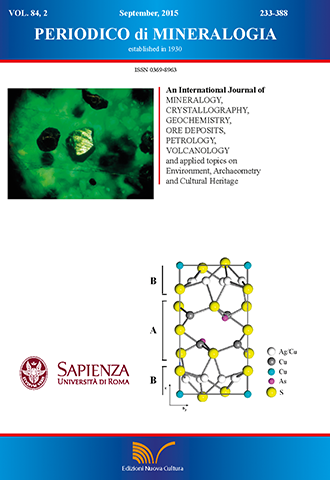Spectroscopic and nanoscale characterization of blue-coloured smithsonite (ZnCO3) from Lavrion historical mines (Greece)
DOI:
https://doi.org/10.2451/2015PM0019Keywords:
Smithsonite, Carbonates, Copper, High-Resolution Transmission Electron Microscopy, Electron Paramagnetic Resonance, NanomineralsAbstract
Abstract
Spectroscopic and microscopic (particularly HRTEM) techniques were used to investigate the origin of the colour of natural blue Zn-carbonate (smithsonite). Blue smithsonite is rich in copper, but substitution of zinc cations by copper cations, as proposed in the past for the origin of the colour, is questionable considering the absence of anhydrous divalent copper carbonates in nature. In this work, optical microscopy, SEM-EDS, XRD and laser micro-Raman could not resolve distinct phases either than Zn-carbonate, while NIR spectra excluded known chromophore Cu-hydroxycarbonate minerals. HRTEM studies however could clearly resolve nano-sized (3-7 nm) Cu-rich inclusions (specifically Si/Ca/Cu/As-rich inclusions of at least one phase), which are organised in bands with no topotaxial relation to bulk smithsonite. Electron-beam sensitivity of the samples, even at low electron current densities, did not allow the exact identification of the inclusions. However, it can be safely suggested, for the first time in the literature, that they are the cause of the blue colour in smithsonite.


